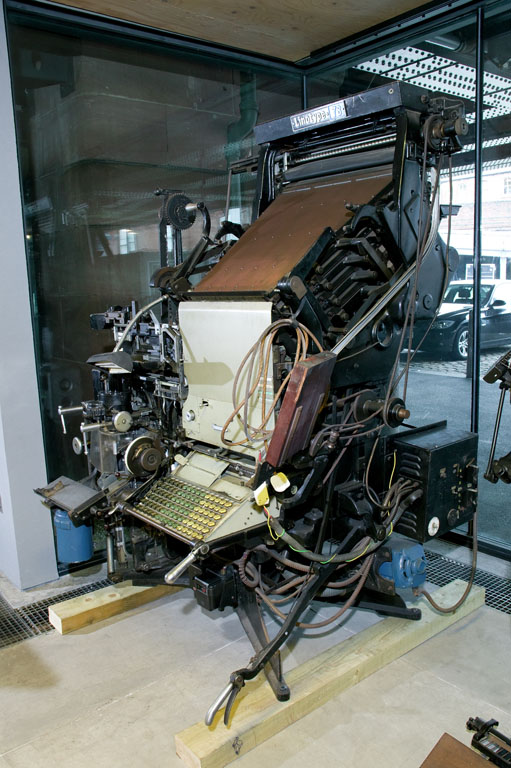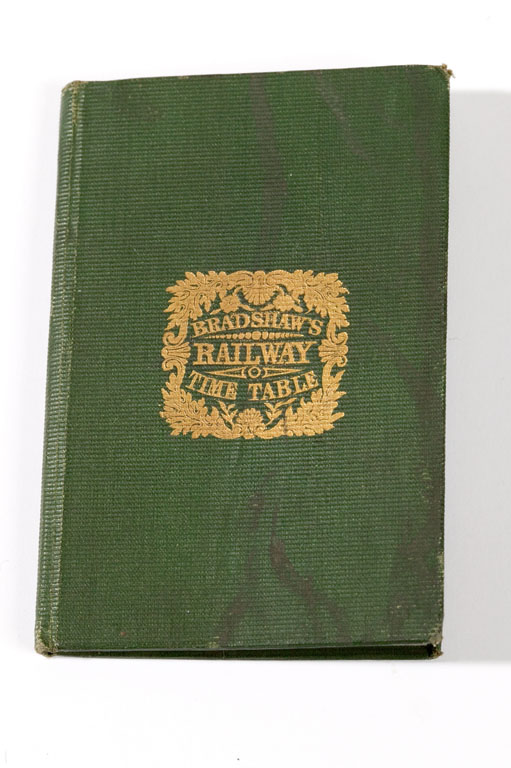
Science Museum Group © The Board of Trustees of the Science Museum
Alice Cliff, our Curator of Science and Technology, chose the Zonephone, made by Ferranti in New Moston, Manchester, which was a flop when it was launched, but nevertheless revolutionised the way we communicated with each other.
Alice said: “The Zonephone was launched in 1989, and changed the way we could communicate with one another. However, it wasn’t very popular – you could only make calls if you were near a base station, and you could only receive calls at home – so the service ended in 1991. The real change came later that decade, when the technology had caught up with the aspiration. So, change is incremental, as well as revolutionary.”
Ferranti also developed the world’s first commercially available computer, the Ferranti Mark I, invented in Manchester in 1951. In our collection is the extensive Ferranti company archive, which includes correspondence and technical papers that reveal the importance of the Mark I to the government of the day.

Science Museum Group © The Board of Trustees of the Science Museum
Archivist Jan Shearsmith chose a jet engine from another of our significant collections, relating to the Manchester-based heavy electrical engineering company Metropolitan-Vickers.
Jan said: “I would choose the development of the F2/1 jet engine, by Metropolitan-Vickers and the Royal Aircraft Establishment, which contributed to faster and longer distance flight”.
Metropolitan-Vickers, or Metrovicks, had a factory at Trafford Park. From fridges and freezers for the domestic market to turbo generators for Battersea Power Station and highly specialised scientific equipment, Metrovicks had an incredibly diverse range of outputs.
The F2/1 was Britain’s first axial-flow jet engine, and can be seen in our Air and Space Hall. Metrovicks also set up one of Manchester’s first radio stations and carried out pioneering, top secret research into radar, which was instrumental in helping the RAF win the Battle of Britain.

Science Museum Group © The Board of Trustees of the Science Museum
Tom Gartrell, part of the museum’s fantastic Explainer team who put on our daily shows, chose one of our smallest steam engines – the Dugdill.
Tom said: “Although I don’t think the engine itself was enormously groundbreaking, it does tell a good story. Steam engines originally powered pumps (to pump water out of mines), then they powered factories like cotton mills, and then they pulled trains. But the Dugdill engine is a great early example of how an engine could be used to generate electricity. This little engine lit a single light bulb in a shop window in Bolton in the 1890s. This would have been very exciting in a time of candles and gas lighting – people would have come to look at the amazing electric light bulb.
“This changed the world, because electricity was soon used to light cotton mills (as the Ashworth and Parker engine next to the Dugdill shows) as well as lighting people’s homes (see the Ferranti engine in the next compound). We still use steam power to generate most electricity today, except now we use steam turbines to do this”.
He added: “The Explainer team also love this engine because it is exactly like a big mill engine, except in miniature, so it’s great for explaining the principles of steam power to schools and the public in a manageable way. We then let people know that if they’ve understood the Dugdill, then they’ve understood all the big steam engines in the room, which work in exactly the same way”.

Science Museum Group © The Board of Trustees of the Science Museum
Archivist Jan Hicks has chosen the Linotype Model 1 linecasting machine, made by Manchester’s Linotype Company, which according to Jan “revolutionised the newspaper printing industry around the world”.
Jan said: “The Model 1 was the first Linotype machine made in Britain, and dates from 1892. Automating the process of making a line of type, rather than manually laying the type out on a composing stick, meant that publishers could print newspapers faster and more cheaply.
“The cost of a newspaper came down, which meant that anyone could buy a copy of their local rag. Easy access to information is one of the most world changing things I can think of.”

Science Museum Group © The Board of Trustees of the Science Museum
Associate Curator Sarah Baines, who curated our Wonder Materials exhibition, chose a seemingly ordinary object – a sticky tape dispenser.
However this is no ordinary tape dispenser – Sarah chose the one currently on display in Wonder Materials, which was used by Nobel Prize winner Professor Andre Geim in the experiments that led to the first isolation of graphene.
Sarah says: “I think it changed the world because it was part of the first isolation of a single atom thick sheet of carbon atoms – graphene. It changed the way we think about nanomaterials.”

Science Museum Group © The Board of Trustees of the Science Museum
Our final choice comes from Meg McHugh, Senior Curator of Collections, who chose a seemingly innocuous item – a railway timetable. However, as Meg points out, “the growth of the railway network necessitated the adoption of standard time”.
So the humble railway timetable actually tells one of the most important stories of all, how the country moved away from “London time”, “Reading time”, “Exeter time” and all the other variations, and settled on one single time.
Bradshaw’s Railway Guide began around 1840 and was the precursor to today’s National Railway timetables.
Printed on the cheapest paper their publisher could find, they were only intended to have a lifespan of a month.
George Bradshaw (29 July 1801 – August 1853) was an English cartographer, printer and publisher and the originator of the railway timetable. He was born at Windsor Bridge, Pendleton, Lancashire.
Bradshaw’s name was already known as the publisher of Bradshaw’s Maps of Inland Navigation, which detailed the canals of Lancashire and Yorkshire, when, on 19 October 1839, soon after the introduction of railways, the world’s first railway timetable was published in Manchester. It cost sixpence and was a cloth-bound book entitled Bradshaw’s Railway Time Tables and Assistant to Railway Travelling. The title was later changed in 1840 to Bradshaw’s Railway Companion, and the price was raised to one shilling. A new volume was issued at occasional intervals, a supplementary monthly time-sheet serving to keep the book up to date.
In December 1841, acting on a suggestion made by his London agent, William Jones Adams, Bradshaw reduced the price of his timetables to the original sixpence, and began to issue them monthly under the title Bradshaw’s Monthly Railway Guide.
From then on the book, in the familiar yellow wrapper, became synonymous with its publisher: for Victorians and Edwardians alike, a railway timetable was “a Bradshaw”, no matter by which railway company it had been issued and whether Bradshaw had been responsible for its production or not.
This is a collaborative piece from the Collections team, compiled by our Press and PR Manager Kat Dibbits.